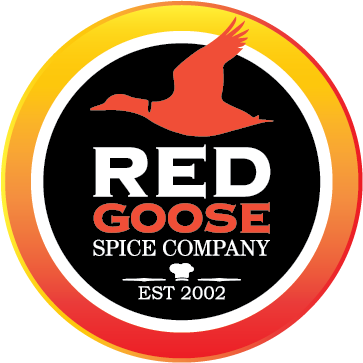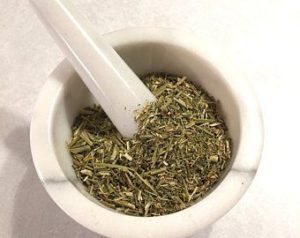If there was a Mount Rushmore of herbs, tarragon would certainly be a strong contender.
Its glossy, slender leaves and highly aromatic, licorice/anise-like flavor, (with a bit of peppery, mint finish), is unmistakable in any dish it’s used in.
And for good reason.
Tarragon is one of the key components of the French herbs mixture known as “Fines Herbes”, which “classically”, consists of: tarragon, chervil, parsley and chives.
Some say that tarragon provides an elegant addition to so many recipes, from salads, almost ANY protein, and numerous soups and sauces as well.
Others say that it’s licorice flavor makes it a “love it, or hate it” herb. Much in the same way that some people feel about cilantro.
But make no mistake, this herb is a star among the many who know that tarragon is an essential herb in any kitchen.
The most common tarragon used in cooking is the French variety, which pairs brilliantly with chicken, fish, and in egg dishes.
With the addition of garlic and shallots, it’s also remarkable in compound butter used as a garnish over char-grilled beef steaks.
Additional varieties of tarragon include Spanish/Mexican and Russian.
But perhaps the MOST widely known use for tarragon is in the classic sauce, Bearnaise, which is a derivative of Hollandaise sauce. It’s often used not just once, but 3 times within the recipe. First as tarragon vinegar, the second, as part of the tarragon reduction, and lastly as a chopped garnish.
Each form of tarragon, introduces its own unique contribution of flavors which meld together so completely in the final sauce.
The French love this classic herb, but it’s also popular in other countries around the world, and used in salads, stews, soups, pickles, pastries and even soft drinks!
It’s also an herb which can be used in the same dish both dry and fresh as BOTH uses take on their own unique flavor properties and truly complement each other in the recipe. Such as is the case with sauce Bearnaise.
Dry VS Fresh
Tarragon’s oils intensify during the drying process.
When using dry tarragon versus fresh chopped tarragon in a recipe, the usual substitution ratio is 1 tsp dry to equal 1 tablespoon of fresh.

When you mention the word, “tarragon” nearly anyone would immediately associate it with “Sauce Bearnaise” and for that reason, it’s a good recipe to share with you here.
Bearnaise is one of 5 “Grand Sauces” that all chefs and devoted cooks learn to make early on. It’s also one, that non-professionals are told is just too difficult to even attempt.

Hollandaise sauce is made from only 4 basic ingredients, but it’s the 2 main ingredients (egg yolks and butter) that can give you real headaches if you don’t to pay attention to what you’re doing.
Here’s how you avoid the headaches, and to show you, we’ll make an average-sized recipe of Bearnaise sauce.
Start by making the tarragon Bearnaise reduction which you will add to the Hollandaise sauce once it is finished.
Set this reduction aside, THEN begin your Hollandaise sauce.
Bearnaise Reduction for Hollandaise Sauce
2 TBSP Dried Tarragon Leaves
1 TBSP Chopped Fresh Shallots
¼ Cup Cider or Tarragon Vinegar
¼ Cup White Wine (nothing too sweet)
¼ tsp Cracked Black Pepper
- Simmer these ingredients together in a small saucepan until reduced to a wet paste. Be careful not to burn it!
- Set it aside and NOW begin your Hollandaise sauce.
Hollandaise Sauce
Makes about 1 Cup
- Before you begin to cook your egg yolks, in a microwave on the defrost setting, melt 1 ½ sticks of butter until the fat separates, and then skim off that clarified butter and reserve.
- Squeeze the juice from a half lemon and reserve.
- Choosing the right bowl and saucepan to make your hollandaise is super important. You want about a small-to-medium-sized saucepan and a mixing bowl that nests within the saucepan, leaving at least an inch of space from the bottom and an inch or so lip at the top. This way, you can easily lift the bowl in and out of the pan as you cook your yolks.
- Put only a half inch of water in your saucepan and bring it to a simmer. You should have a space between the bottom of your mixing bowl and the water, and that will mean your egg mixture will be cooking gently over the steam and not directly on the water.
- Place 2 egg yolks in your mixing bowl, and for each yolk, a half egg shell of water–in this case 2 half egg shells worth.
- This step will help you to cook your egg yolks into a “pudding.” Place the bowl over the simmering water, and using a whisk, beat the egg yolk mixture on and off the steam heat (about 15 seconds each round). This method will take a bit longer to turn this raw mixture into a thickened egg pudding, but it will also prevent your mixture from cooking too fast and turning into scrambled eggs.
- When the egg mixture is sufficiently cooked, the whisk will create tracks in the mixture. This will let you know it’s time for the next step.
- Remove the water from the saucepan and lay a damp kitchen towel or paper towel over its mouth. Replace your bowl and nest it in snugly. This neat trick will allow you to do the next step more easily.
- This step gets everyone in trouble now, but if you just take your time, there’s NO reason you should ever have a problem. You’re going to make an emulsion here by SLOWLY–and the key word is SLOWLY–adding the clarified butter to the cooked egg “pudding.” That means whisking somewhat briskly while adding the clarified butter in very small amounts, especially at first.
- Start by drizzling in less than a tablespoon; don’t dump it in all at once. Drizzle it in a thin stream. Once that is incorporated, add another, the same way.
- After the 3rd tablespoon, you’ll notice the mixture is getting thicker. Now is when you begin to whisk in a bit of your squeezed lemon juice–about a teaspoon. Continue alternating butter and lemon juice until they’re both used up.
- The hard part is over, now all you have to do is add the tarragon mixture you made earlier. Whisk it in briskly and season with a pinch of salt if you like.





